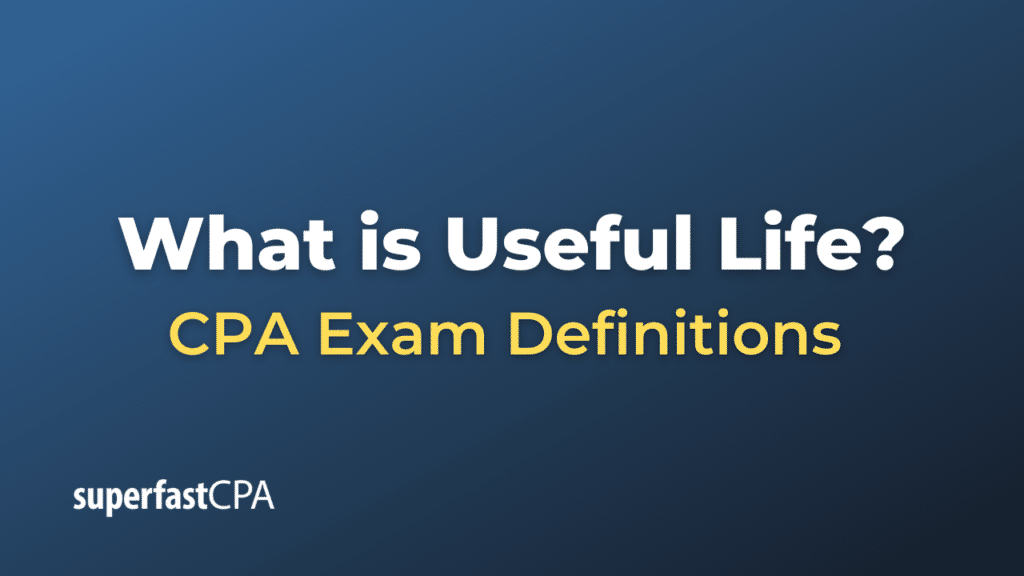Useful Life
“Useful life” is an accounting and financial term used to describe the estimated period of time that an asset, such as machinery, equipment, or software, is expected to be functional and contribute value to a business. This estimate helps businesses calculate depreciation for tangible assets or amortization for intangible assets. Understanding the useful life of an asset is essential for tax purposes, financial reporting, and business planning.
The concept of useful life is not necessarily tied to the physical durability of the asset. For instance, a computer’s useful life may be considered to be three to five years, not because the computer will stop working after that time, but because it will likely become obsolete and less effective for business purposes.
Factors Affecting Useful Life
- Technological Changes: Rapid innovation can make assets obsolete more quickly.
- Wear and Tear: Physical deterioration due to usage, weather, or other environmental factors.
- Economic Factors: Market demand can influence how long an asset remains useful. For example, a taxi might have a useful life of several years, but if a new, cheaper form of transport becomes popular, the taxi might become economically obsolete before it becomes physically unusable.
- Legal or Regulatory Factors: Changes in laws or regulations can also limit the useful life of an asset. For example, machinery that doesn’t meet new safety regulations may need to be replaced.
Importance in Accounting
Understanding an asset’s useful life is crucial for determining its annual depreciation expense. The cost of the asset is allocated over its useful life, and each year’s depreciation expense is recognized on the income statement, affecting the asset’s carrying value on the balance sheet.
Example of Useful Life
Let’s use the example of a small business that purchases a delivery van for its operations. We’ll look at how the concept of “useful life” plays a role in accounting for this asset.
Initial Scenario
- Cost of the van: $50,000
- Estimated useful life: 5 years
- Estimated salvage value: $5,000 (the estimated value of the van at the end of its useful life)
One commonly used method for calculating depreciation is the straight-line method, where the cost of the asset is spread evenly over its useful life. Here’s how it would work for this example:
- Calculate the total depreciable amount:
Depreciable Amount = Cost of Van − Salvage Value
Depreciable Amount = $50,000 – $5,000 = $45,000 - Calculate the annual depreciation expense:
Annual Depreciation = Depreciable Amount / Useful Life
Annual Depreciation = $45,000 / 5 = $9,000
Accounting Implications Over 5 Years
Each year, the company would record a depreciation expense of $9,000 on its income statement. This would reduce the carrying value of the asset on its balance sheet. Here’s how the carrying value would change over the 5-year useful life:
- End of Year 1: Carrying value = $50,000 – $9,000 = $41,000
- End of Year 2: Carrying value = $41,000 – $9,000 = $32,000
- End of Year 3: Carrying value = $32,000 – $9,000 = $23,000
- End of Year 4: Carrying value = $23,000 – $9,000 = $14,000
- End of Year 5: Carrying value = $14,000 – $9,000 = $5,000 (matches the estimated salvage value)
Summary
In this example, understanding the “useful life” of the van helped the company to:
- Plan for the asset’s replacement by knowing its expected lifespan.
- Accurately report its financial condition by depreciating the asset over its useful life.
- Make informed decisions about maintenance and capital expenditure budgets.
The concept of useful life is thus integral to effective financial management and reporting for businesses.













